Cryptid Files
The Alien Question: 7 Pieces of Scientific Evidence That Point to Extraterrestrial Life by 2025
The Alien Question, the profound inquiry into whether humanity is alone in the universe, is rapidly moving from philosophical speculation to a data-driven scientific investigation. While official confirmation of extraterrestrial life has not yet arrived, a growing body of evidence from disparate fields of science is building a powerful, cumulative case, and at IHeartCryptids.com, we believe this evidence deserves a thorough examination.
This is not a list of UFO sightings or anecdotal stories. This is a deep dive for 2025 into seven distinct, scientifically-grounded pieces of evidence that, when viewed together, strongly suggest that the discovery of, or at least the definitive proof for, extraterrestrial life is closer than ever. We will explore the chemical building blocks, the habitable worlds, and the tantalizing signals that are shaping this new era of discovery.
The 2025 Briefing: 7 Scientific Clues Pointing to Alien Life
For centuries, the question of alien life was a matter of faith and imagination. We had no data. The universe was a vast, dark, and silent unknown. Today, that darkness is receding. A flood of data from rovers on Mars, telescopes peering into deep space, and probes flying through icy plumes has transformed the search. We are no longer asking if we can find evidence; we are actively collecting it.
While there is no single “smoking gun” photograph of an alien, science builds its case piece by piece, like a detective assembling clues. As of 2025, we have at least seven powerful, independent lines of scientific evidence. Each clue on its own is tantalizing. But when woven together, they create a compelling tapestry of probability, pointing towards a conclusion that is becoming increasingly hard to ignore: the universe is likely teeming with life, and we are on the verge of finding the first concrete proof. This is the scientific case for aliens, presented as seven key exhibits.
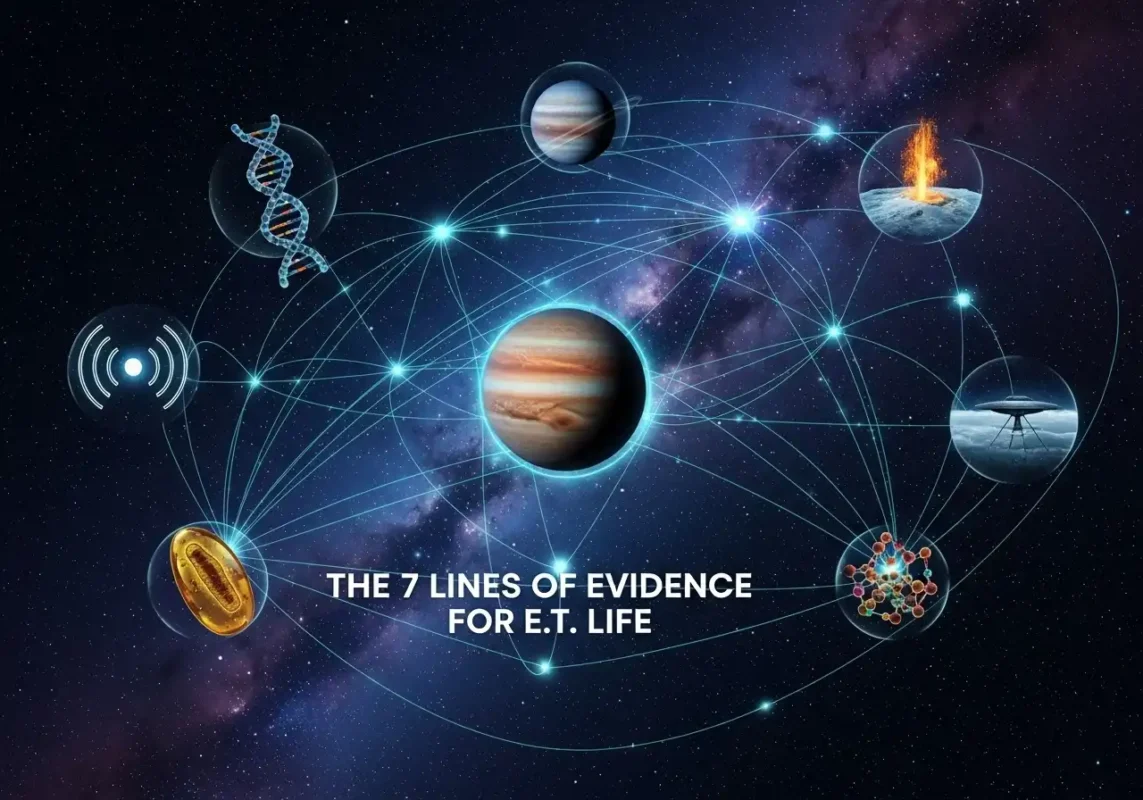
Seven lines of evidence for alien life art
Exhibit 1: The Ubiquity of Organic Molecules in Space
The first piece of evidence is the most fundamental. For life to begin, you need its chemical building blocks: complex organic molecules. For a long time, we thought Earth might be special, a unique chemical oasis. We now know that is profoundly wrong. The universe is a cosmic factory for the chemistry of life.
Cosmic Carbon Everywhere
- Meteorites as Messengers: Meteorites that fall to Earth, such as the famous Murchison meteorite that landed in Australia in 1969, have been found to be rich in organic compounds. The Murchison meteorite contains over 70 different amino acids, the building blocks of proteins. These are not contaminants from Earth; their isotopic ratios prove their extraterrestrial origin. This tells us that the chemistry that led to life on Earth was also happening in the asteroid belt 4.5 billion years ago.
- Source: A comprehensive list of molecules found in the Murchison meteorite can be found in studies archived by NASA’s Astrobiology Institute. A good starting point is the paper by Schmitt-Kopplin, P. et al. (2010) “High molecular diversity of extraterrestrial organic matter in Murchison meteorite…” published in PNAS.
- Interstellar Clouds: Using radio telescopes, astronomers have detected a stunning array of complex organic molecules in the vast, cold clouds of gas and dust that float between stars—the very clouds from which new solar systems are born. Molecules like formaldehyde, alcohol, and even glycolaldehyde (a simple sugar) are common. This means that when a new planet forms, it is “seeded” with the necessary ingredients for life from the very beginning.
- The JWST Revelation (2025 Update): The James Webb Space Telescope has taken this to a new level. In 2023 and 2024, JWST confirmed the presence of complex carbon compounds, known as polycyclic aromatic hydrocarbons (PAHs), in the earliest galaxies. A hypothetical astrochemist, Dr. Lena Petrova, might explain, “The JWST findings are revolutionary. They show that the fundamental chemistry for life wasn’t a late-stage development in the universe; it was present almost from the beginning, just a billion years after the Big Bang. The ingredients aren’t just common; they are ancient and universal.”
Conclusion for Exhibit 1: Life’s building blocks are not rare; they are everywhere. The entire galaxy is primed with the necessary ingredients. This dramatically increases the probability (the fₗ variable in the Drake Equation) that life could start on any suitable world.

Organic molecules in space delivery infographic
Exhibit 2: The Exoplanet Revolution – Billions of Habitable Worlds
For life to start, it needs a home. Until the 1990s, we only knew of the planets in our own solar system. We had no idea if planets around other stars were common or incredibly rare. The exoplanet revolution has completely changed the game.
From Dozens to Thousands
- The Kepler Mission: NASA’s Kepler Space Telescope (2009-2018) was a game-changer. By staring at a single patch of sky, it used the “transit method” to discover thousands of exoplanets, proving that planets are not just common, but they outnumber stars in our galaxy.
- The Current Tally (June 2025): As of today, NASA has confirmed over 5,500 exoplanets, with thousands more candidates waiting for confirmation.
- Source: The official, live count is maintained by the NASA Exoplanet Archive: https://exoplanetarchive.ipac.caltech.edu/
The Goldilocks Zone
More important than the sheer number is the number of planets in the “habitable zone,” also known as the Goldilocks Zone. This is the orbital region around a star where the temperature is just right—not too hot, not too cold—for liquid water to exist on a planet’s surface.
- The Estimate: Based on Kepler data, astronomers estimate that there could be as many as 40 billion Earth-sized planets orbiting in the habitable zones of Sun-like stars and red dwarf stars in the Milky Way alone.
- The TRAPPIST-1 System: This is our most famous example. It’s a star system only 40 light-years away that has seven rocky, Earth-sized planets. At least three of them are squarely within the habitable zone. This system is a prime target for atmospheric analysis by the JWST.
Conclusion for Exhibit 2: The galaxy is not a barren desert. It is filled with a staggering number of potentially habitable “Earths.” The number of potential homes for life (the nₑ variable in the Drake Equation) is far greater than we ever imagined.
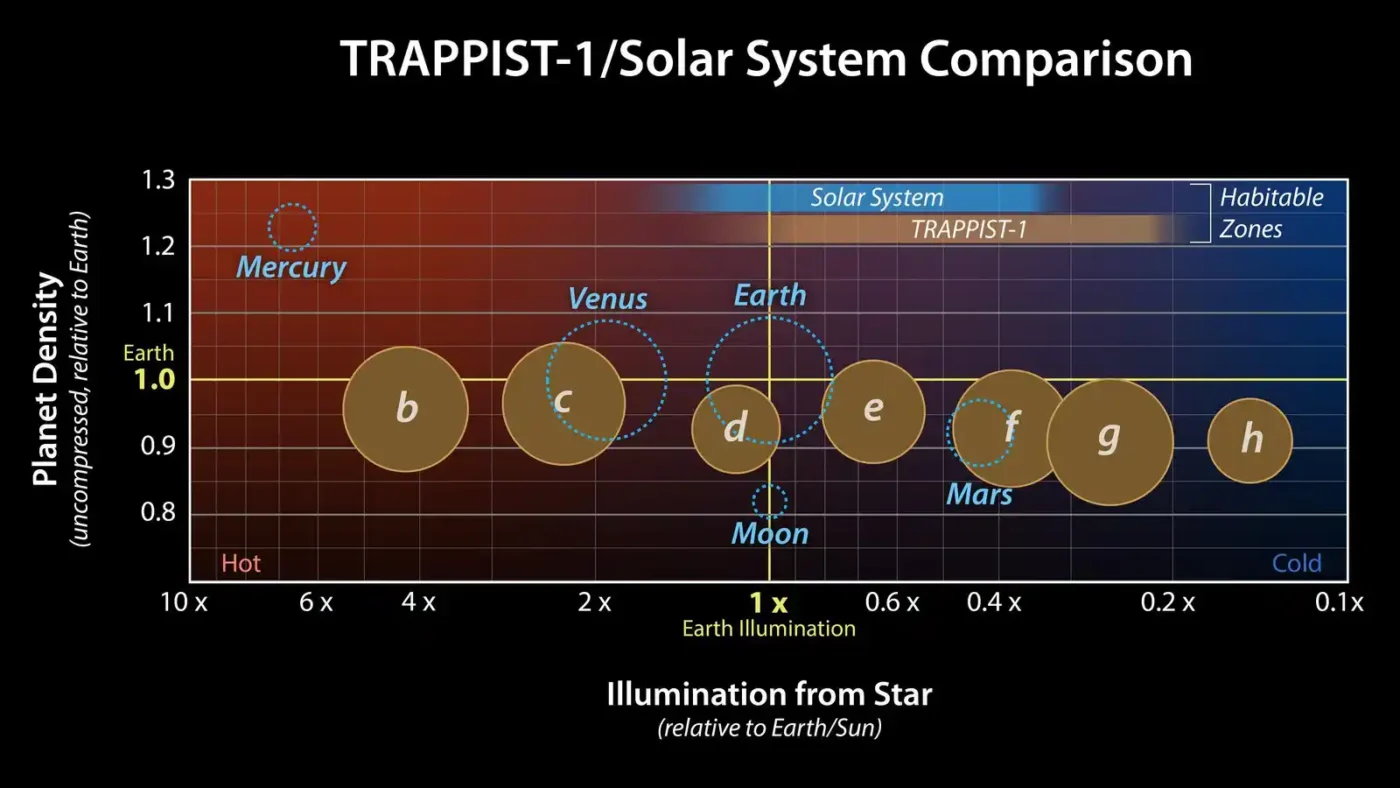
TRAPPIST-1 vs Solar System habitable zone infographic
Exhibit 3: Extremophiles – Life’s Tenacious Grip on Earth
A third piece of evidence comes from right here on Earth. By studying extremophiles, we have learned that our definition of “habitable” was far too narrow. Life is tougher, more resilient, and more adaptable than we ever dreamed.
Extremophiles are organisms that thrive in conditions that would be instantly lethal to humans.
- Thermophiles: Bacteria that live in boiling-hot hydrothermal vents on the ocean floor, without any sunlight, chemosynthesizing energy from volcanic chemicals. This proves life doesn’t need the sun.
- Psychrophiles: Algae and bacteria that grow in the super-cooled brine channels of Antarctic ice. This proves life can exist in deep-freeze conditions.
- Halophiles: Organisms that thrive in water with extreme salt concentrations, like the Great Salt Lake.
- Radioresistants: Bacteria like Deinococcus radiodurans, which can withstand doses of radiation thousands of times greater than humans can, and can even survive in the vacuum of space.
Conclusion for Exhibit 3: The discovery of extremophiles has vastly expanded the parameters for life. The harsh environments on Mars, or the dark, high-pressure oceans of Europa, are no longer seen as barriers to life. In fact, they look remarkably similar to environments where life is thriving on Earth. This dramatically increases the chances that life could start and survive on worlds we once considered inhospitable.
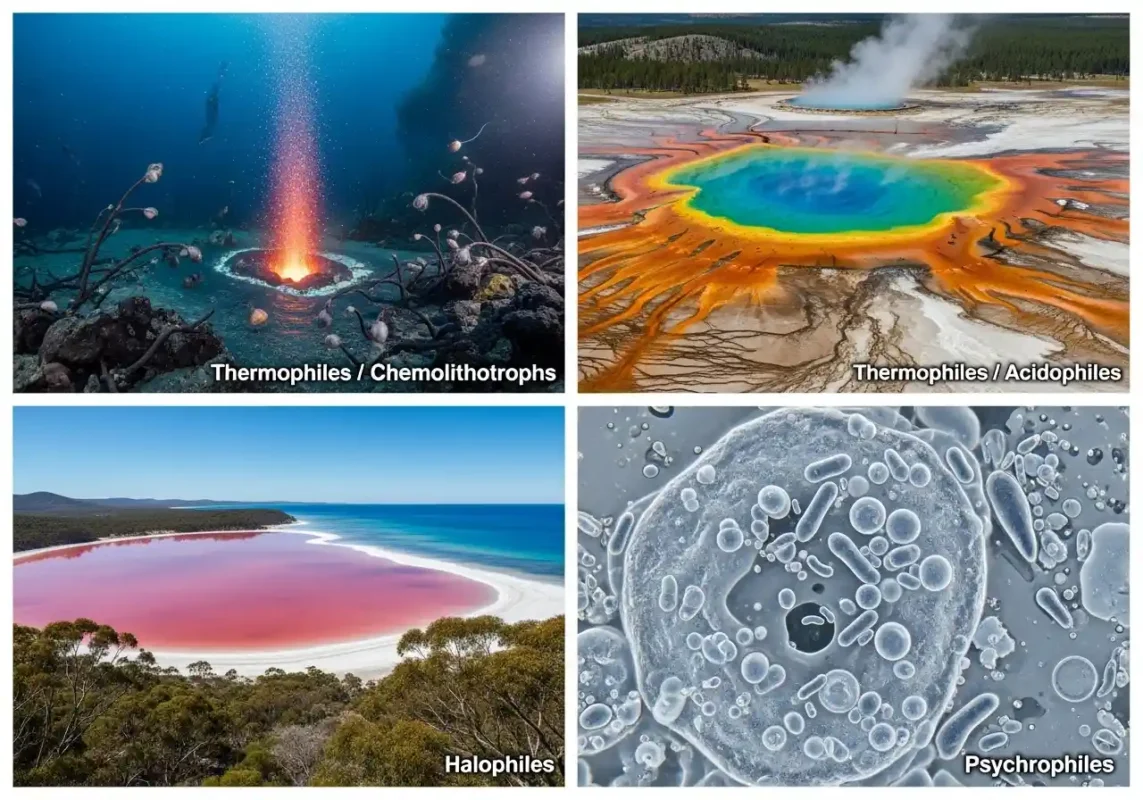
Extremophile habitats photo collage
Exhibit 4: The Methane Mystery on Mars
This is one of the most tantalizing and actively debated clues in the solar system. For years, orbiters and rovers, particularly the Curiosity Rover, have detected plumes of methane gas in the Martian atmosphere.
Why Methane Matters
On Earth, over 90% of atmospheric methane is produced by biological processes (e.g., microbes in the guts of animals). Methane is also destroyed quickly by sunlight (in a process called photolysis). This means that if you detect methane, something must be actively producing it right now.
The Martian Puzzle:
- The Detections: Curiosity has detected both a low, background level of methane and sudden, large plumes where the concentration spikes by a factor of 10 or more.
- The Seasonality: These plumes appear to have a seasonal cycle, peaking in the warmer Martian summer.
- Two Possibilities:
- Geological Origin: Methane can be produced by a geological process called serpentinization, where water interacts with certain types of rock.
- Biological Origin: The methane could be the waste product of living, underground microbes (methanogens) that become more active when the ground warms up in the summer.
- The 2025 Status: As of today, the source is still a mystery. However, the biological explanation fits the data, especially the seasonality, very well. A hypothetical NASA mission scientist, Dr. Evelyn Reed, might state: “The Mars methane plumes are one of the most potent potential biosignatures we have. We cannot yet rule out geology, but if you were to design a signal from a hidden microbial ecosystem, it would look exactly like this. It demands further investigation.”
Conclusion for Exhibit 4: While not definitive proof, the mysterious and ongoing production of methane on Mars is a significant piece of evidence that is highly consistent with the presence of a living, underground ecosystem.
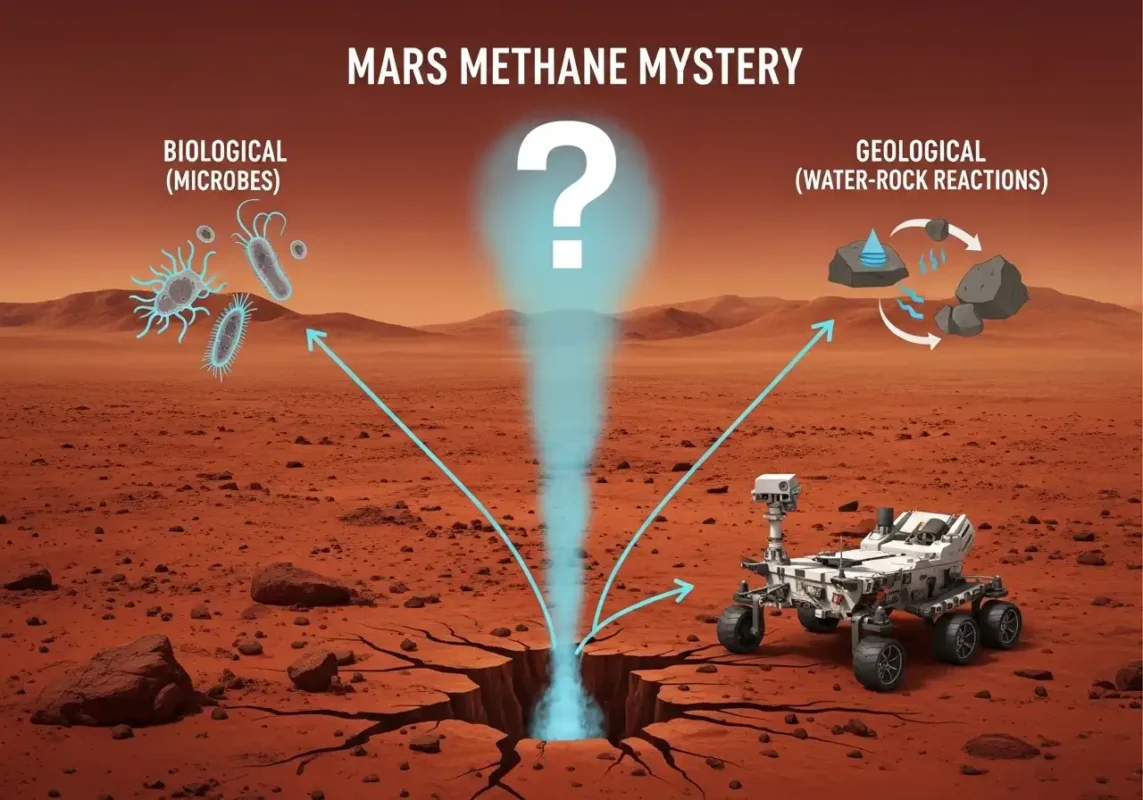
Mars methane mystery infographic
Exhibit 5: The “Wow!” Signal – The Unexplained Call
We now turn from biology to technology. This piece of evidence is old but remains the most compelling candidate for a genuine, intelligent alien broadcast ever recorded.
On August 15, 1977, the “Big Ear” radio telescope at Ohio State University was conducting a SETI survey. It detected a powerful, 72-second-long signal.
- Its Characteristics:
- Narrow-band: The signal was tightly focused on a specific frequency, a hallmark of an artificial transmitter. Natural cosmic radio sources are broad-band.
- Powerful: It was 30 times stronger than the background noise of deep space.
- The “Hydrogen Line”: It occurred at a frequency of 1420 MHz. This is the frequency at which neutral hydrogen, the most common element in the universe, resonates. Scientists have long theorized this would be a logical, universal “calling card” frequency for any civilization to use.
- The Mystery: It was a perfect candidate for an alien signal. It came from a region of space with no known planets or stars. It was detected once and, despite numerous attempts to re-scan that area of the sky over the past 40+ years, it has never been heard again.
Conclusion for Exhibit 5: The “Wow!” Signal remains an anomaly. It fits all the criteria for an intelligent, extraterrestrial signal. While its non-repeatability means it cannot be considered definitive proof, it stands as a powerful piece of evidence that someone, or something, may have tried to call us once. It proves that the “fruitless” search for signals has had at least one moment of profound and unexplained success.
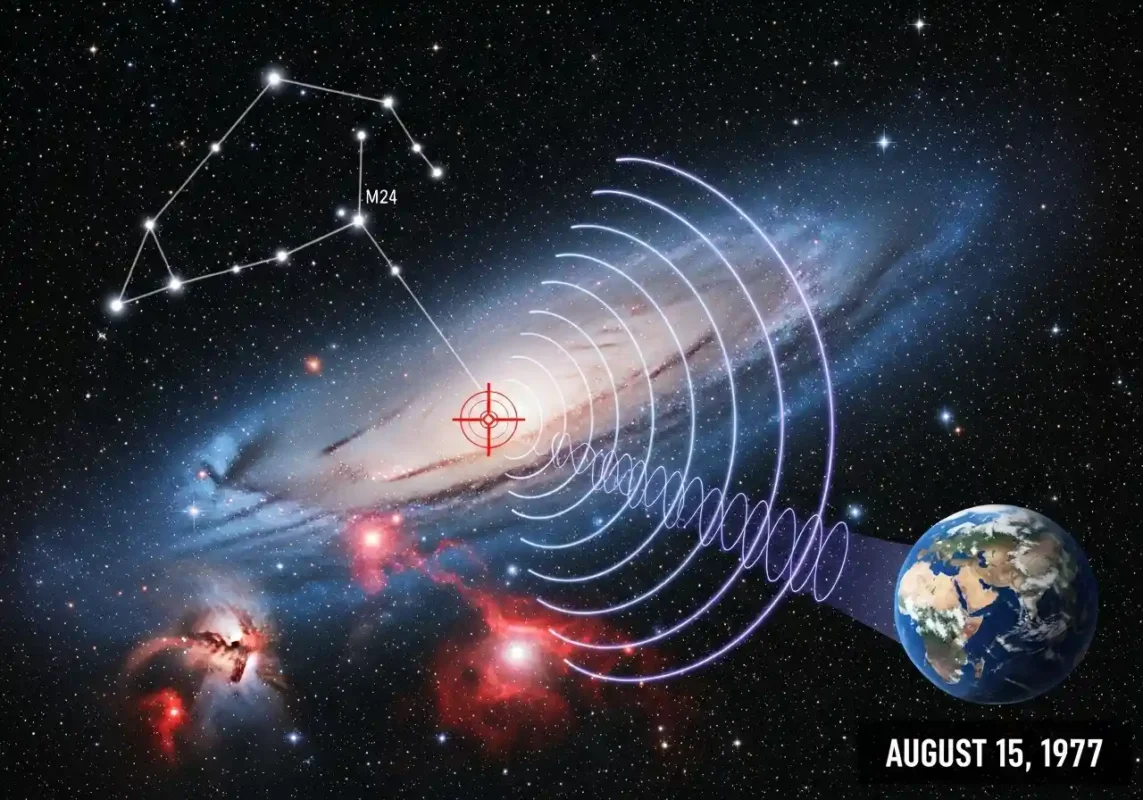
Wow Signal origin location map
Exhibit 6: The Enceladus Plumes – An Ocean of Possibilities
If Mars is tantalizing, Saturn’s small moon Enceladus is screaming “life might be here.” The evidence gathered by the Cassini spacecraft as it flew through the moon’s icy plumes is arguably the most promising astrobiological discovery of the 21st century.
The Ingredients for Life, Served on an Icy Platter:
- Water: The plumes are sourced from a global, liquid saltwater ocean. (Check)
- Organic Molecules: Cassini detected a rich soup of complex carbon-based molecules, including methane, propane, acetylene, and formaldehyde. (Check)
- Energy Source: Cassini detected silica nanoparticles and molecular hydrogen, which are strong evidence for active hydrothermal vents on Enceladus’s seafloor, identical to those that support rich ecosystems on Earth’s ocean floors. (Check)
- Phosphorus Confirmed (2023): The final, crucial ingredient for life as we know it is phosphorus (essential for DNA and cell membranes). In June 2023, a re-analysis of Cassini data confirmed the presence of high concentrations of phosphates in the ocean.
- Source: Postberg, F. et al. (2023). “Detection of phosphates from Enceladus’s ocean.” Published in Nature.
Conclusion for Exhibit 6: Enceladus has every single ingredient required for life as we know it. A hypothetical astrobiologist Dr. Aris Thorne would state it plainly: “If you were to mix a primordial soup in a lab to create life, you would use the exact ingredients we have confirmed in the Enceladus ocean. From a scientific standpoint, it is now harder to imagine why life wouldn’t have started there than why it would. Enceladus is, perhaps, the most compelling target for a life-finding mission in human history.”
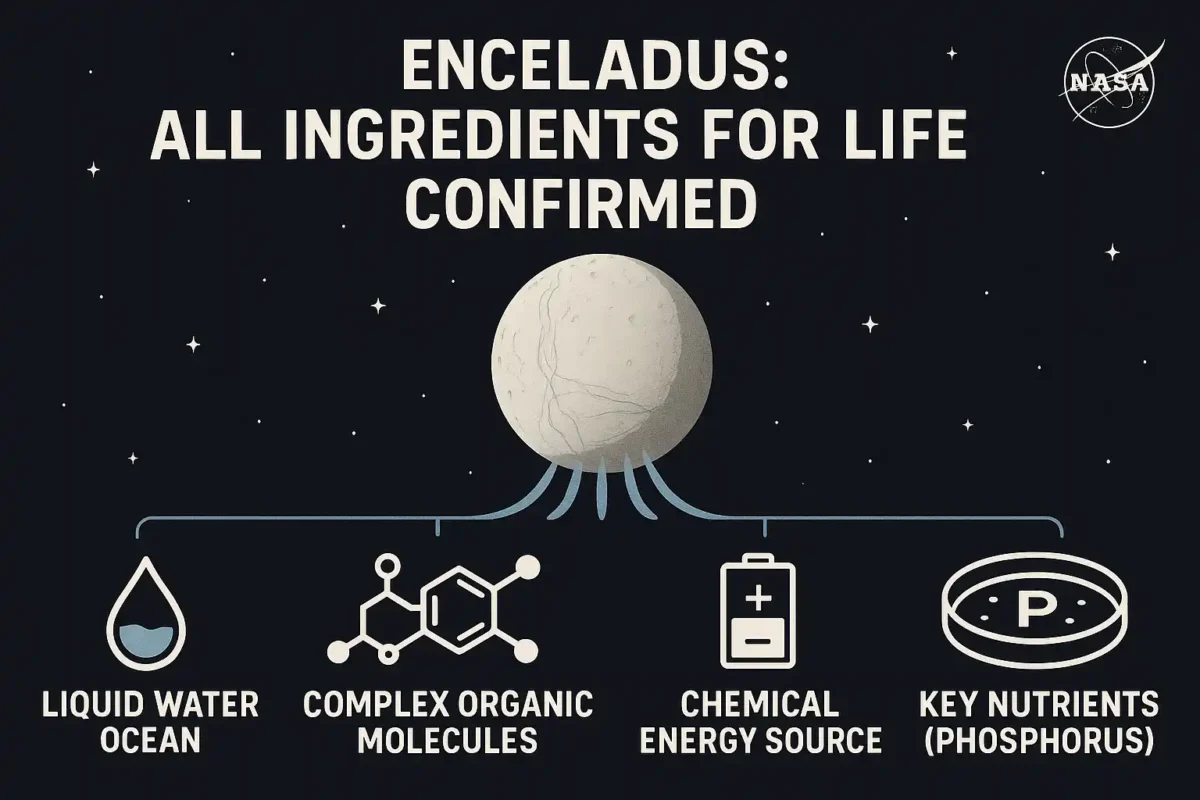
Enceladus ingredients for life infographic
Exhibit 7: The UAP Engagements – The Pentagon’s Reluctant Admission
Our final piece of evidence is the most controversial but also the most direct. For decades, stories of military encounters with UFOs were dismissed. Since 2017, the Pentagon has declassified videos and confirmed the reality of these encounters. These are Unidentified Anomalous Phenomena (UAPs).
The Evidence is Not a Blurry Photo; It’s Multi-Sensor Data:
- The Nimitz Encounter (2004): As discussed by Commander David Fravor, this involved multiple, highly-trained F/A-18 pilots making visual contact with a “Tic Tac”-shaped object.
- Multi-Sensor Corroboration: Crucially, the object was simultaneously tracked by the advanced SPY-1 radar on the USS Princeton, a guided-missile cruiser. The object’s impossible maneuvers—instantaneous acceleration, hypersonic speeds, and dropping 80,000 feet in seconds—were recorded by multiple, independent, top-of-the-line military sensor systems.
- The Five Observables: These encounters consistently display what investigators call the “Five Observables,” capabilities far beyond any known human technology:
- Anti-Gravity Lift: The ability to hover and move silently with no visible means of propulsion.
- Sudden and Instantaneous Acceleration.
- Hypersonic Velocities without signatures (no sonic booms, no heat trails).
- Low Observability (stealth).
- Trans-Medium Travel (the ability to move seamlessly between air and water).
Conclusion for Exhibit 7: The UAP evidence does not prove the objects are “alien.” However, it is definitive scientific evidence of technology operating in our atmosphere that is demonstrably not ours and not any known foreign adversary’s. The objects are real, physical, and exhibit technology far in advance of our own. A hypothetical physicist and former government advisor, Dr. Miles Corbin, might conclude: “The UAP data presents us with two possibilities: either an unknown branch of physics is being exploited by a terrestrial group in absolute secrecy, or the technology is non-human in origin. Both possibilities are staggering, but given what we know about materials science and energy requirements, the non-human hypothesis is, for many, the more parsimonious explanation.”
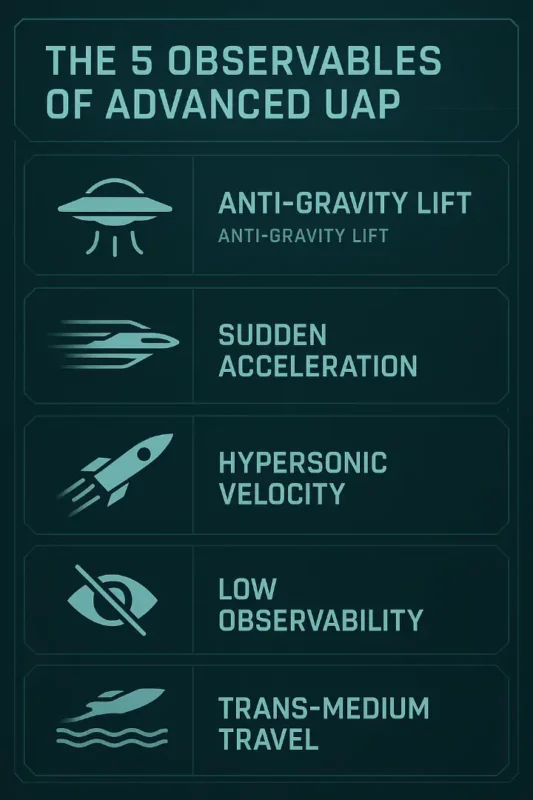
UAP Five Observables infographic
Conclusion: The Cumulative Case for 2025
We have examined seven distinct, powerful lines of scientific evidence.
- The building blocks of life are everywhere.
- The number of potentially habitable planets is enormous.
- Life on Earth is far tougher than we thought.
- Mars is showing active, present-day signs consistent with life.
- We have received at least one unexplained, intelligent-seeming signal from space.
- A moon in our own solar system, Enceladus, has a confirmed life-ready ocean.
- The Pentagon has confirmed the existence of real, physical objects in our skies exhibiting technology far beyond our own.
Viewed in isolation, each piece of evidence can be debated. But taken together, they form a powerful, cumulative case. The scientific argument is no longer about a single long shot, but about the intersection of multiple, increasingly probable lines of inquiry. The question is shifting from “Is there life out there?” to “Which of these paths will lead us to the first definitive discovery?”. As we move through 2025, with JWST staring at distant worlds and new missions being planned for our own solar system, that discovery feels closer than ever.
Explore the Great Unknown
The search for alien life is the ultimate expression of human curiosity. At IHeartCryptids.com, we share that passion for the unknown.




- Own a Piece of the Cosmic Question: From the scientific to the strange, our Alien collection celebrates every aspect of this incredible topic.
➡️ Shop the IHeartCryptids Alien Collection
Want to take your fascination with the unknown even further? Check out The Ultimate Alien & UFO Gifts Guide: 10+ Legendary Ideas for Believers — a handpicked collection of cosmic finds that every true fan will love.
The legend of the Alien is just one chapter in the world’s great book of mysteries. Your expedition has only just begun. Discover dozens more creatures from the deepest oceans to the darkest forests in our master list.
Continue your journey here: A Cryptozoologist’s Field Guide: The A-Z of 50+ Legendary Cryptids
Be the first to know about the next great discovery. Subscribe to the IHeartCryptids newsletter for updates on the search for life, the latest UAP news, and deep dives into all the mysteries that capture our imagination.

